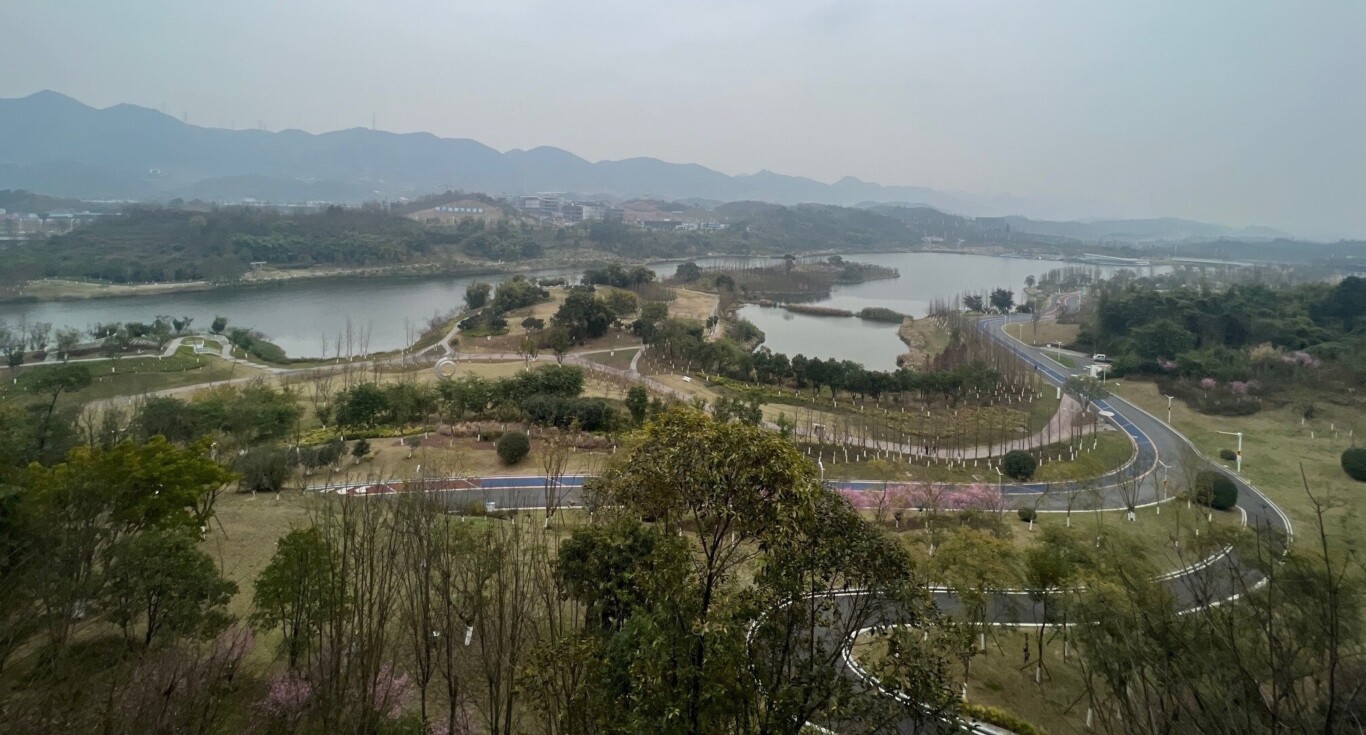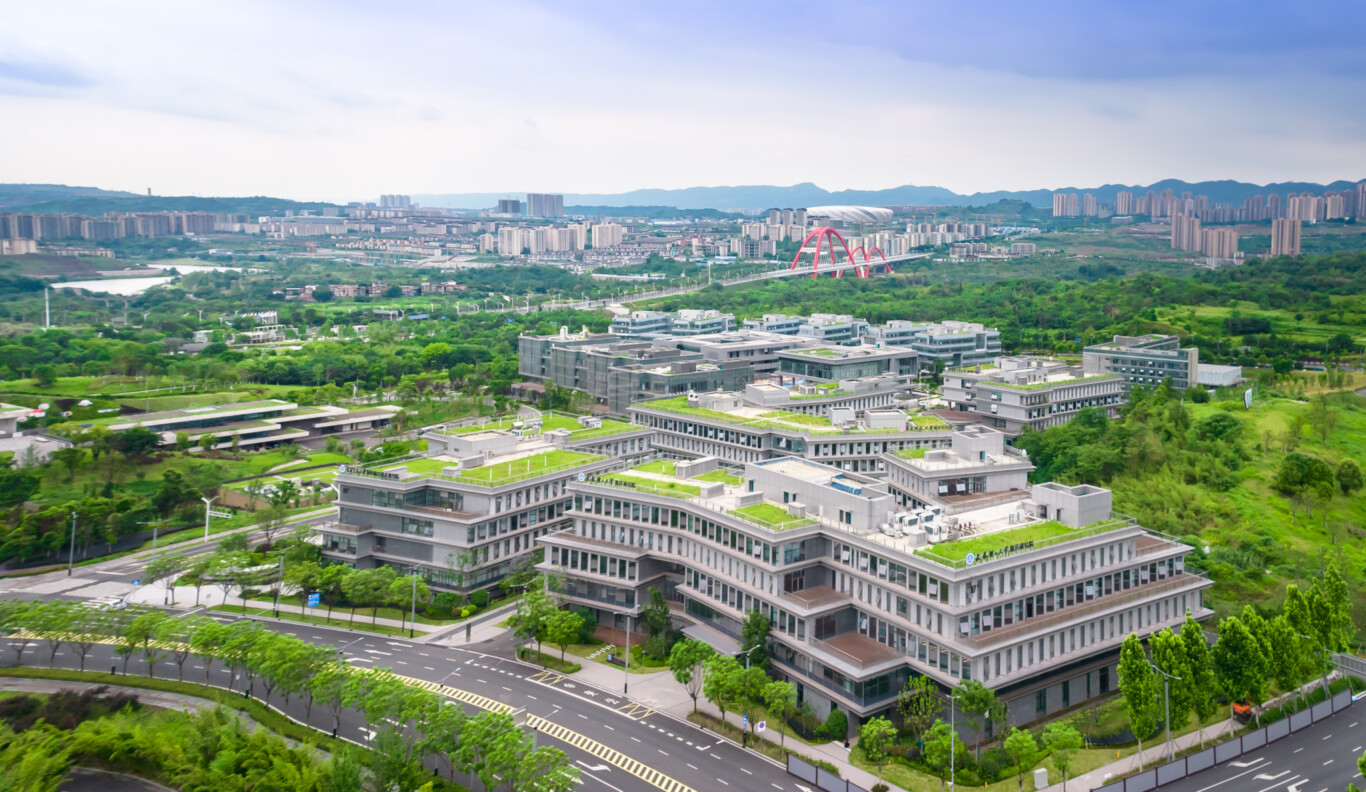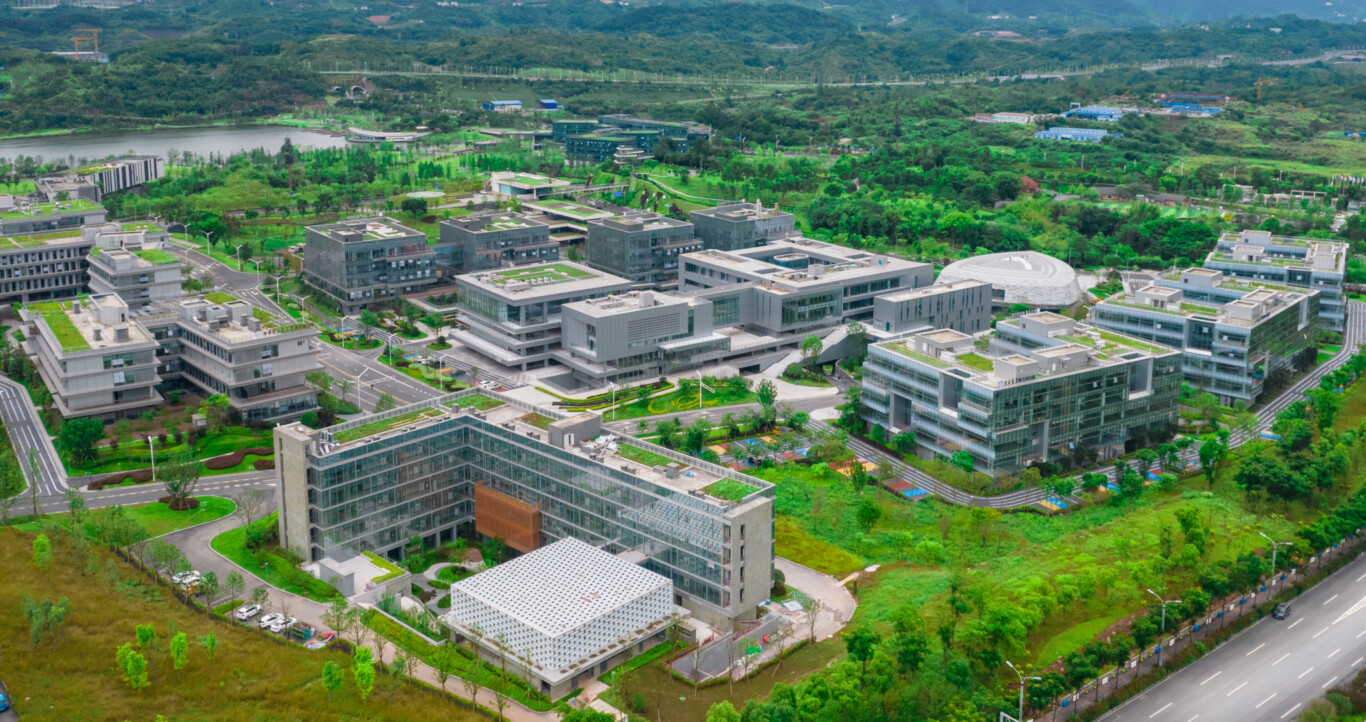
Construction of the 680-hectare innovation and education district in Chongqing enters the last phase
Chapman Taylor won a major international competition to masterplan Liangjiang Innovation Zone; a new district for the city of Chongqing that will complete construction in 2025. Liangjiang has been chosen by the Chinese government as a developmental ‘new area’ for Chongqing, which has a population of over 30 million people and is one of China’s four centrally governed municipalities.
700,000 sqm of land has been fully developed, with its first buildings occupied. Mingyue Lake hotel and Mingyue Square are now open to the public. 50 research and development institutions and 214 enterprises are now housed within the Innovation Zone. A 200-hectare area of Mingque Lake Park has been built.
An additional 550,000 sqm is under construction, including the Innovation Centre (290,000 sqm).
Chapman Taylor's designs are based on the careful integration of the existing ecology with a connected series of five university campuses surrounded by R&D clusters and related facilities and services. Liangjiang Innovation Zone will play a key role alongside other new districts in developing and implementing Chongqing’s smart city strategy. The fully transit-orientated development provides railway, metro, BRT, electric bus and water taxi connections throughout the site. Sustainability is embedded in the project, which will be self-sufficient in energy needs – using solar, biomass and hydroelectric power sources, resulting in a saving of over 450,000 tons of CO² per annum.
The valley formed by the hills to the east and west perimeter of the site has become a Mingyue lake. The south of the lake is surrounded by beautiful landscapes interspersed with social, sports and cultural villages, which are a contemporary interpretation of the traditional villages of the region.
Sean Hosey Marketing Director shosey@chapmantaylor.com LONDON STUDIO 10 Eastbourne Terrace London W2 6LG United Kingdom T +44 (0)20 7371 3000 M +44 (0)7587 037 429 www.chapmantaylor.com WINNER OF OVER 300 DESIGN AWARDS GLOBALLY Chapman Taylor LLP is a limited liability partnership registered in England and Wales No. OC302467. A list of the members is available for inspection at the Registered Office. This email transmission is privileged, confidential and intended solely for the person or organisation to which it is addressed. If you have received the message in error please notify Chapman Taylor immediately at london@chapmantaylor.com. All messages are checked for malware, but we cannot guarantee that any attached files are free from malware. It is a condition of our supplying files to you that any liability on our part in respect of, or arising directly or indirectly out of any malware, is excluded. Therefore please run malware-checking software and check files thoroughly before opening them. Any attached computer files are liable to be updated and the current file dates are the ones indicated in this email. The use of these files is at your own risk and any documents made on the basis of these files are entirely your responsibility.
700,000 sqm of land has been fully developed, with its first buildings occupied. Mingyue Lake hotel and Mingyue Square are now open to the public. 50 research and development institutions and 214 enterprises are now housed within the Innovation Zone. A 200-hectare area of Mingque Lake Park has been built.
Chapman Taylor's designs are based on the careful integration of the existing ecology with a connected series of five university campuses surrounded by R&D clusters and related facilities and services. Liangjiang Innovation Zone will play a key role alongside other new districts in developing and implementing Chongqing’s smart city strategy. The fully transit-orientated development provides railway, metro, BRT, electric bus and water taxi connections throughout the site. Sustainability is embedded in the project, which will be self-sufficient in energy needs – using solar, biomass and hydroelectric power sources, resulting in a saving of over 450,000 tons of CO² per annum.
Sustainability is embedded in the project, which will be self-sufficient in energy needs – using solar, biomass and hydroelectric power sources, resulting in a saving of over 450,000 tons of CO² per annum.
The fully transit-orientated development provides railway, metro, BRT, electric bus, and water taxi connections throughout the site.
The valley formed by the hills to the east and west perimeter of the site has become a Mingyue lake. The south of the lake is surrounded by beautiful landscapes interspersed with social, sports and cultural villages, which are a contemporary interpretation of the traditional villages of the region.

